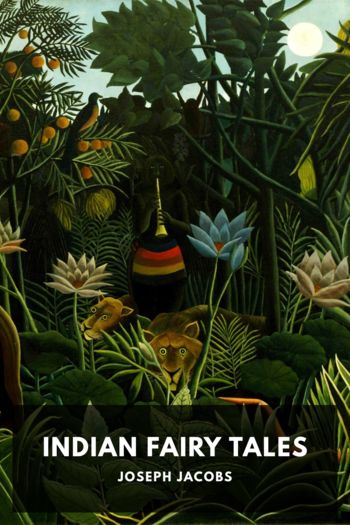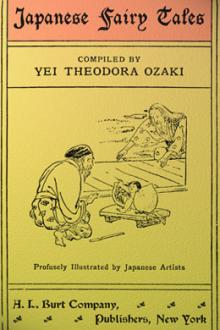Indian Fairy Tales by Joseph Jacobs (best books to read for students TXT) 📕

- Author: Joseph Jacobs
Book online «Indian Fairy Tales by Joseph Jacobs (best books to read for students TXT) 📕». Author Joseph Jacobs
The collection of current Indian folktales has been the work of the last quarter of a century, a work, even after what has been achieved, still in its initial stages. The credit of having begun the process is due to Miss Frere, who, while her father was Governor of the Bombay Presidency, took down from the lips of her ayah, Anna de Souza, one of a Lingaet family from Goa who had been Christian for three generations, the tales she afterwards published with Mr. Murray in 1868, under the title, Old Deccan Days, or, Indian Fairy Legends Current in Southern India, Collected from Oral Tradition by M. Frere, with an Introduction and Notes by Sir Bartle Frere. Her example was followed by Miss Stokes in her Indian Fairy Tales (London, Ellis & White, 1880), who took down her tales from two ayahs and a Khitmatgar, all of them Bengalese—the ayahs Hindus, and the man a Mohammedan. Mr. Ralston introduced the volume with some remarks which dealt too much with sun-myths for present-day taste. Another collection from Bengal was that of Lal Behari Day, a Hindu gentleman, in his Folktales of Bengal (London, Macmillan, 1883). The Panjab and the Kashmir then had their turn: Mrs. Steel collected, and Captain (now Major) Temple edited and annotated, their Wideawake Stories (London, Trübner, 1884), stories capitally told and admirably annotated. Captain Temple increased the value of this collection by a remarkable analysis of all the incidents contained in the two hundred Indian folktales collected up to this date. It is not too much to say that this analysis marks an onward step in the scientific study of the folktale: there is such a thing, derided as it may be. I have throughout the Notes been able to draw attention to Indian parallels by a simple reference to Major Temple’s Analysis.
Major Temple has not alone himself collected: he has been the cause that many others have collected. In the pages of the Indian Antiquary, edited by him, there have appeared from time to time folktales collected from all parts of India. Some of these have been issued separately. Sets of tales from Southern India, collected by the Pandit Natesa Sastri, have been issued under the title Folklore of Southern India, three fascicules of which have been recently reissued by Mrs. Kingscote under the title, Tales of the Sun (W. H. Allen, 1891): it would have been well if the identity of the two works had been clearly explained. The largest addition to our knowledge of the Indian folktale that has been made since Wideawake Stories is that contained in Mr. Knowles’ Folktales of Kashmir (Trübner’s Oriental Library, 1887), sixty-three stories, some of great length. These, with Mr. Campbell’s Santal Tales (1892); Ramaswami Raju’s Indian Fables (London, Sonnenschein, n.d.); M. Thornhill, Indian Fairy Tales (London, 1889); and E. J. Robinson, Tales of S. India (1885), together with those contained in books of travel like Thornton’s Bannu or Smeaton’s Karens of Burma bring up the list of printed Indian folktales to over 350—a respectable total indeed, but a mere drop in the ocean of the stream of stories that must exist in such a huge population as that of India: the Central Provinces in particular are practically unexplored. There are doubtless many collections still unpublished. Col. Lewin has large numbers, besides the few published in his Lushai Grammar; and Mr. M. L. Dames has a number of Baluchi tales which I have been privileged to use. Altogether, India now ranks among the best represented countries for printed folktales, coming only after Russia (1500), Germany (1200), Italy and France (1000 each.)3 Counting the ancient with the modern, India has probably some 600 to 700 folktales printed and translated in accessible form. There should be enough material to determine the vexed question of the relations between the European and the Indian collections.
This question has taken a new departure with the researches of M. Emanuel Cosquin in his Contes populaires de Lorraine (Paris, 1886, 2e tirage, 1890), undoubtedly the most important contribution to the scientific study of the folktale since the Grimms. M. Cosquin gives in the annotations to the eighty-four tales which he has collected in Lorraine a mass of information as to the various forms which the tales take in other countries of Europe and in the East. In my opinion, the work he has done for the European folktale is even more valuable than the conclusions he draws from it as to the relations with India. He has taken up the work





Comments (0)